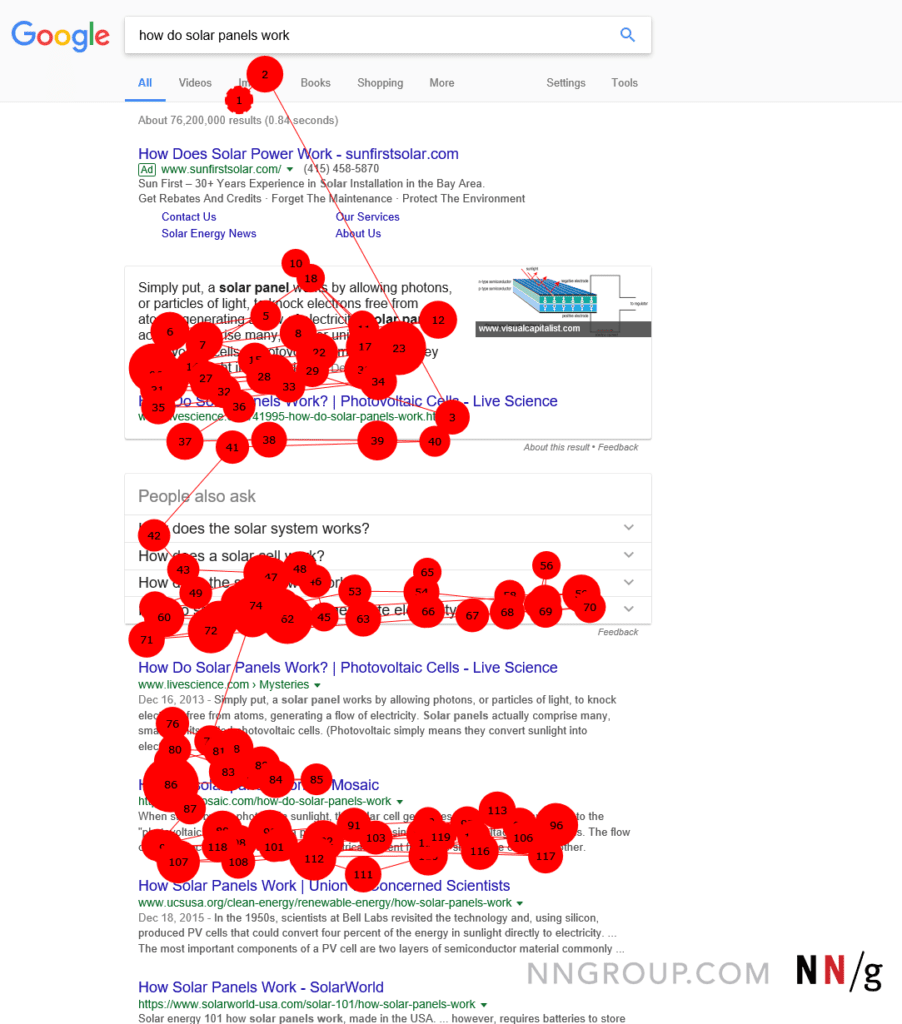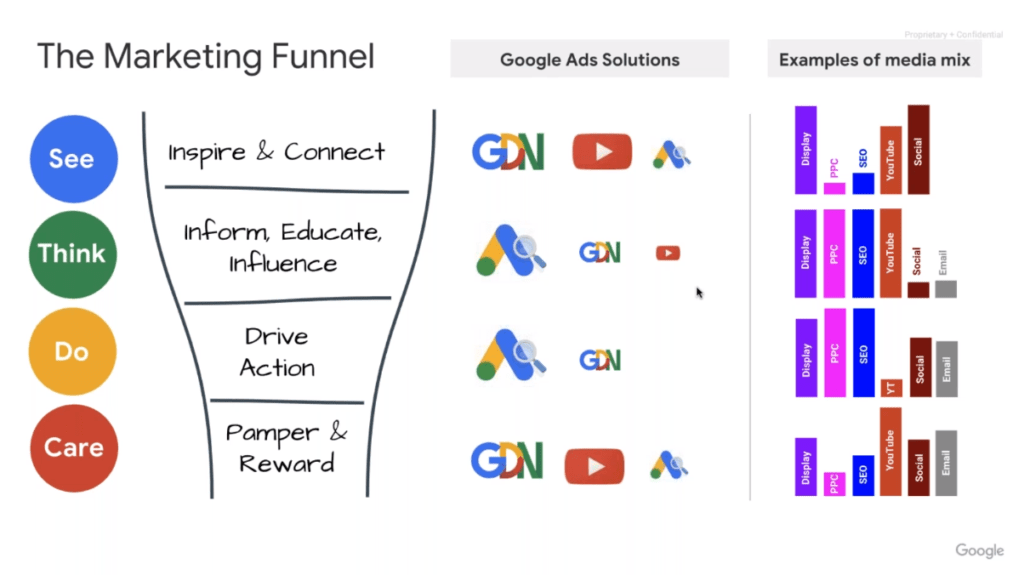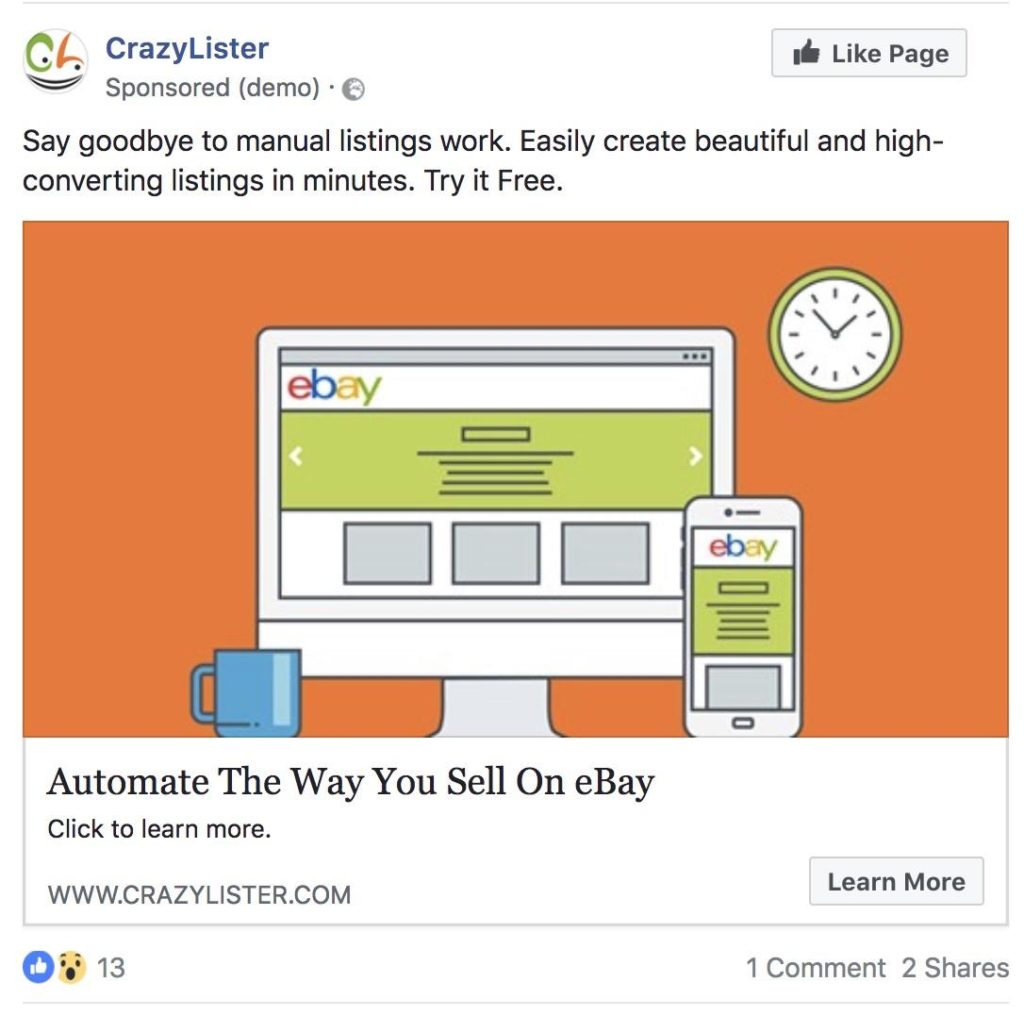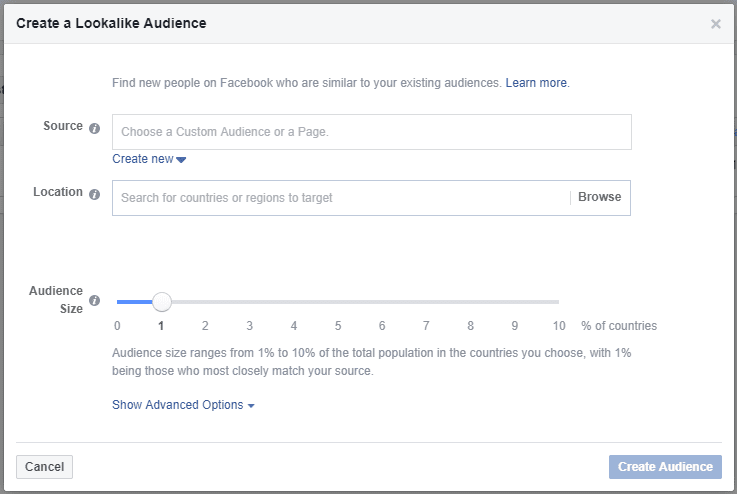How To Duplicate A Campaign In Google Ads
Google Ads and Facebook ads dominate the online advertising space.
If you want to reach customers, then Google's search network or Facebook's news feeds are the places to be.
Facebook currently has two billion monthly active users, making it a hotbed for user activity.
Google Ads reaches billions of people each and every day.
Both of these networks excel when it comes to delivering results.
So, when it comes to Facebook ads vs Google Ads, which platform is better?
Which one is right for your business? Well, that's what we're here to find out.
Here's how to make the right choice for your business.
But first, let's look a little closer at why you should be considering either of these options to begin with.
Why Advertising Online is Essential
The way we search for answers has fundamentally changed because of smartphones.
These days, "Googling it" is so common that it's been added to our vernacular and daily routines.
And according to a recent study, the average person will spend more than five years of their life browsing on social media.

Image Source
And to add to the increased connectivity, we've also become more curious, demanding, and impatient in our search for products, information, and services. Consumers want fast answers.
But it also means that consumers these days are empowered.
It's easier than ever to find and search for products online, which means it's also more competitive than ever.
To help customers find your brand, you have to participate and assist them in their decisions in a way that will subtly convince them that you're the best option.
So needless to say, with the shift in the way we shop and look for information, the customer journey has changed.
It's become more interconnected and complicated than ever before, and you'll need a way to stand out in this madness.

Image Source
That's where online advertising comes into play.
Online advertising as a whole, impacts these consumer-related areas at the very least:
- Builds brand awareness
- Helps increase the spread of information
- Affects buyer behavior
- Provides reminders to curious buyers
- Uses repetition to improve sales
- Provides multiple purchase pathways
And those are just the beginning.
Marketers have also been studying consumer behavior for years, and in that time we've uncovered quite a few interesting principles that point to why ads work so well.
For example, one principle known as banner blindness points to the fact that the average online user avoids the sides of a web page almost entirely:

Image Source
That's why online ads are placed in the line of fire so to speak. Both Google and Facebook ads have adapted to this behavior and make it easier than ever to ensure your audience engages.
Simply put, Google and Facebook ads are more capable than ever to help grow your business.
But only if you know how to use them properly.
So now let's get down to brass tacks and break down each of these awesome advertising platforms. But first… shameless plug (but oh so very useful for you!!!)
What Is Google Ads?
Before we go on, what is Google Ads?
Google is the world's largest search engine. Bing and those other ones are a distant second, third, and fourth.

(Image Source)
According to Internet Live Stats, there are now five billion Google searches per day.
Google Ads is a great place to advertise if you're looking to tap into that enormous search traffic.
On Google Ads, there are a few common ways to advertise and get your brand in front of new users:
- Search network: the search network allows campaigns to appear for searches based on keywords like "plumbing service." Search network ads show up at the top of Google search results, like this:

- Display network: The display network campaigns show your ads on websites and apps when your keywords are related to the site's content. These ads can come in forms of videos, images, and more. Here is what the typical display ad looks like:

(Image Source)
- Google Shopping: Shopping ads are eCommerce-based ads that allow you to show up for relevant, high-intent searches based on direct products.
For example, when someone searches for basketball shoes, your product can show up:

- Video: Video-based ads let you show ads on streaming sites like YouTube and across the Google Display Network as well.
- Google Ads Retargeting: Google allows for sophisticated retargeting, so that you can remarket to that lost customer and win a sale.
These are some of the most common types of advertising on Google Ads.
There are other options, of course. But these will generally be your go-to ad formats with Google Ads.
Now that you have a handle on the basics of advertising, let me explain who this platform is going to work for:
Almost everyone.
I know – that was super anti-climactic.
According to Google, advertisers on their platform make $2 for every $1 spent .
That means that doubling your investment on their platform is commonplace.
Plus, you can find (or run) these ads in a wide variety of formats, which means the potential to reach a wider audience is huge.

If you sell products online (e-commerce), you can easily take advantage of Google shopping ads.
If you are a locally-based company looking to get more sales, you can create location-based campaigns on the search network or even on Google Maps.
Looking to land more clients for your law firm or SEO agency? Search network ads based on specific keywords are among the highest converting, anywhere.
Simply put, Google Ads excels when it comes to driving traffic with the intent to convert.
For example, when someone searches for a keyword like "plumber near me," they're most likely going to call the first few plumbers they find.
You know from simply reading that keyword that they are looking to solve problems fast.
But Google is also capable of doing more than just converting customers who want to buy now.
Google Search ads are the primary tool in the middle-to-bottom of the funnel, but the Google Display Network and YouTube ads excel at both building brand awareness and providing customer support after a purchase.

Image Source
So Google Ads can be used for branding too, which expands the umbrella of Google Ads to compete directly with Facebook ads.
In sum, Google Ads is an all-around option that has something to offer every brand on the web.
But what about Facebook ads?
Facebook Ads: A Quick Recap
Why do people use Facebook?
Are they looking to search a keyword and solve a problem? Do they need a plumber? Obviously not.
Facebook is a social network. Which means most (sane) people aren't going there to find plumbers. Or sign up for services. Or buy products.
The intent to purchase isn't as high as Google Ads.
But that doesn't mean it's a waste of ad spend, either.
Facebook has more than two billion monthly active users. You can find almost any target or niche market on the platform.

(Image Source)
And with such a diverse and large user base, you have a great shot at finding success.
Facebook ads often come in the form of news feed style ads that integrate directly into your Facebook feed and look like a normal post:

You can currently advertise on mobile, desktop, Instagram, and even through Facebook Messenger.
On Facebook, you can cater to a variety of different goals for your advertising:

Want to drive brand awareness and likes on your business page? You can easily do that.
Need to get more leads? They've got powerful lead generation ads.
Want more traffic to your blog posts or engagement on your site? Check.
Need to drive more sales and store visits? Check.
The options are just as diverse, if not more diverse than what Google Ads has to offer.
But remember: the intent is different.
Facebook also excels when it comes to targeting audiences for your advertisements.
They have "Custom Audiences" that allow you to target users by diverse demographics including job title, seniority, income level, and even things like hobbies or favorite TV shows.
You can get extremely specific with custom audience targeting.
Now, let me address the burning question that you still have lingering in the back of your mind:
Is Facebook advertising right for my business?
Here's the answer:
More than likely, yes it is.
Here's why.
Just about everyone and anyone you know is on Facebook. Meaning B2B and B2C companies and their employees are all using it.
Anyone from your local diner to a major tech company is going to be on Facebook.
On top of that, the minimum ad spend is $1 per day, and they have an incredibly low cost per click.
In fact, it averages around $0.40 per click, and is often lower:

That means that spending only a dollar each day on the platform can get you in front of 4,000 new people that might have otherwise not heard of your business.
You could spend as little as $30 monthly and still get thousands upon thousands of impressions for your business.
Additionally, you can complement your Facebook campaigns with other social media strategies, such as using Messenger chatbots to use an email-marketing style approach with your audience with tools like MobileMonkey.
For example, you can set up targeted chat blasts, create a drip campaign, or send out non-promotional messages to highly segmented and opted-in audiences. These methods are already seeing a tremendous amount of success, and you can even use them with Facebook ads.

(Image Source)
So… should you?
Should you invest money in Facebook ads to take advantage of lower costs and excellent demographic targeting?
Or should you funnel your cash into Google Ads to take advantage of strong search intent that leads to higher conversions?
Or… should you do both?
Google Ads vs Facebook Ads: Which Is Better for You?
So. Google Ads vs Facebook Ads. Two very different advertising platforms, with different benefits.
Google Ads and Facebook ads are both exceptional places to advertise your business.
They're relatively cheap (depending on your industry). And each has billions of users with diverse audience targeting options.
So what's the deal?
Is one better than the other?
Obviously, the answer is highly dependent on your unique scenario. However…
What is your end goal?
What are you looking to get out of this?
If your answer is sales, leads, consultations, or anything of that nature — both platforms will be perfect for that.
If your answer was brand awareness or social following, Facebook is the place to be.
If you want to sell products or just about any other category, both platforms can do the trick.
Keep on reading and discover a few ways to maximize your results on both platforms today.
How To Use Google Ads
Start with the Search Network.
The search network on Google Ads is the most popular place to advertise to see results quickly.
With display ads, you need great images or video-based content, whereas the search network only requires written ads.
On top of that, the average click-through rate for display ads across all formats & placements in the USA is only 0.08%.
So, the search network is the best place to start.
To get started on the search network, you need to locate keywords for your business. Get familiar with Google's keyword planner to get started.

Start by entering a keyword, phrase, or URL that's related to your business.
This will allow Google Ads to instantly give you some ideas of keywords to target without you having to come up with them yourself.
Then, hit "Get Started" to pull up tons of suggestions:

Let me break down some of the data to give you a better idea of what you'll be analyzing:

- The competition metric is simply a basic look at how many advertisers are trying to compete for this keyword. The higher the competition, the more businesses are bidding on it.
- And the bid ranges are how much typical advertisers are paying for each click on the highest and lowest ends.
With these numbers, you can begin to get an idea of how much your campaigns will cost and which keywords are going to be right for your business.
How To Advertise On Facebook — Fast
As you read before, Facebook advertising has some seriously powerful targeting options.
Except, that's also kind of the problem. There are TONS of options for different campaigns.
So here are a few easy places to start.
-
Tip 1. Create a lookalike audience based on previous sales or clients.
One of the best ways to get started on Facebook is to use a lookalike audience.
The lookalike audience is Facebook's way of replicating your current customers to your business to give you the best bang for your buck.
It can also take existing emails from your customers and matches those emails to Facebook profiles.
Once it does that, Facebook looks for other users with similar attributes to target.
Meaning you get a new audience of people who are exactly like your existing customers.
Plus, it only takes a minute to set up, and you can integrate it with MailChimp.
Head to Facebook and create a Business Manager Account if you don't have one set up already. Next, locate the Audiences section.

From here, create a new lookalike audience:

Create your lookalike audience based on a customer file:

Now, you can upload a file of your customer information or import it directly from MailChimp:

Once you've done this, be sure to select 1% as your audience size:

1% audience sizes will generate a much lower cost as the audience is more specific and targeted.
Now hit "Create Audience," and you're ready to create fantastic images to get the ball rolling.
-
Tip 2. Use images to really make an impact on conversions.
Images are responsible for anywhere between 75 – 90% of an ad's performance on Facebook.
When done correctly, you literally don't even need words.
Try using a platform like Canva to create high-quality images for Facebook Ads.
You can also check out our Facebook ad size cheat sheet to make sure your campaign content looks its best.
3 Strategies to Use Facebook and Google Ads Together
Now that you know how both Facebook and Google Ads work, let's explore some ideas on how you can use them together.
1. Build Your Brand With Facebook, Close with Google
As we've seen so far, Facebook ads are a phenomenal way to build brand awareness and put your product in front of new audiences.
A campaign that's targeted correctly will help you warm up a cold audience, and eventually, those users are going to start searching for your brand on Google.
In fact, studies have shown that Facebook Ads lead to a significant uptick in branded Google searches almost immediately after a user sees your ad:

Image Source
And there's a pretty easy answer as to why this occurs.
Most of the users on Facebook who see your ads, if targeted correctly, are already going to have some pre-existent interest in your offer. They just don't know about your brand.
So when they see your Facebook ad, discover what your brand is, and want to learn more, they naturally switch to Google to conduct a little research.
This is great for a few reasons. First, instead of clicking your Facebook ad and ticking off some of your ad budget, they conduct an organic search instead. That means your ad continues to work on an ongoing basis.
The key here is to use your brand name as a keyword in your Google Ads, and use similar messaging across both channels. That way when someone sees your second Google ad after the Facebook ad, they know where to click.
While it may seem counterintuitive to run ads for your own brand, it's actually a great practice to do anyway. You can almost guarantee that your competition is going to use your brand name as a keyword, so if you want to stay competitive you'll need to advertise under your brand's keyword.
Let's take a look at how you can use this strategy effectively. Here's a look at one brand's Facebook ad:

Image Source
And then here's the matching Google ad that uses the same messaging in order to draw you in:

Image Source
So use this strategy to take cold audiences and warm them up to your services. Then, close the deal on Google if they decide to search for your brand.
It's the perfect one-two punch that shows how Google and Facebook are the perfect pairs.
2. Target Your Facebook Audience With Google Ads Data
If you're using Facebook Ads, you've probably set up Pixels to help you track user behavior and collect more data.
But that's not the only way to broaden your horizons when it comes to user data.
There are quite a few useful Google Ads data points that you can bring over to improve targeting on your Facebook ads:
- Gender
- Household income
- Time of engagement
- Retargeting audiences
Each of the above points (and many more) can help you fine-tune your ads and put your brand on a potential customer's radar.
With better targeting, you'll get more out of your ad budget in the long run.
3. Find Similar Audiences on Facebook to Boost Both Platforms
And if you're curious, you can indeed implement the reverse idea and use Facebook data to help hone in on your Google audience.
Here's what to look for in the opposite direction then.
One of Facebook's greatest strengths is their lookalike audience feature:

If you decide to advertise on Facebook, it's highly recommended that you dig deeper into lookalike ads and use them as much as you can to help your brand.
But we can cover some of the basics here.
The best practice in this instance is to take the data from your ideal customers and use that as a base for your lookalike audience.
That way you find similar customers on Facebook that will spend more money on your business.
But the real hack here that will help you really expand the ability of all your ads is to use data interchangeably between Google and Facebook.
Or in other words, take your Facebook lookalike and use the same inputs on Google to create an audience that overlaps and works in tandem with your Facebook lookalike audience.
This will help your retargeting ads and boost your brand awareness much more than simply relying on data from a single platform.
You'll still need to be careful to avoid heavily overlapped audiences, but this can still be a great cross-platform hack.
Use data from both platforms interchangeably where you can, but keep in mind that the intent on each platform is different. You'll still need to test in order to find what works best.
Conclusion
When it comes to Google Ads vs. Facebook ads, it doesn't have to be a competition or a choice. You can use both.
Paid search is one of the best ways to reach new audiences and re-engage with older leads.
Google Ads and Facebook Ads have unique benefits for almost any type of business.
Each of them has diverse targeting options and great ad placements that can help you bring in new customers.
If your goal is to only generate brand awareness and more social media traffic, Facebook is the place to be.
If you want to get more leads, sales, or conversions, then both platforms will do the trick.
Or better yet, use them together so that each can rely on its own strength.
Find creative ways to mix and match your Facebook and Google Ads to build them into a paid search dream team.
Build awareness and nurture leads with Facebook. Then, close the deal on Google Ads when people start searching for solutions.
It's not an either/or question. It's both at the same time.
Here you are, the decision is up to you now.
Use Hootsuite Ads to run both Google and Facebook ads alongside each other. From a single dashboard you can create and launch campaigns, optimize performance, and measure results. Try it today.
Get Started
How To Duplicate A Campaign In Google Ads
Source: https://blog.hootsuite.com/facebook-ads-vs-google-ads/
Posted by: hookerlikedy.blogspot.com

0 Response to "How To Duplicate A Campaign In Google Ads"
Post a Comment